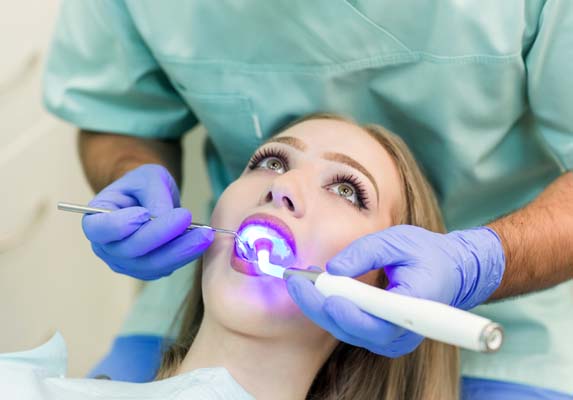Common Cosmetic Dental Bonding Treatments

Dental bonding is popular within cosmetic dentistry for both children and their patients for a number of reasons. The first reason is that the application of dental bonding only requires a short session in the dentist’s chair. There is also the fact that dental bonding is a non-invasive procedure that patients can sit through without the need for anesthetic. Best of all, dental bonding is affordable and versatile. It can correct a wide variety of flaws without breaking the bank. This all sounds great; but is dental bonding for everyone? The following sections tell us what dental bonding can and cannot do.
Who is a good candidate for dental bonding? A cosmetic dentist explains
Every patient that walks into the dentist’s office has a unique set of circumstances. Dentists will recommend the best cosmetic treatment for their patients based on oral health and aesthetic needs. One patient will be a great candidate for dental bonding while another will need more aggressive treatments. What follows are some criteria of a good candidate for dental bonding:
- A person with healthy teeth and gums.
- Anyone with small imperfections (a small crack, a chipped tooth or slight discoloration).
- A patient who wants to limit their spending
- Anyone who prefers a minimally invasive procedure that does not file away a layer of tooth enamel.
Dental bonding hides cosmetic imperfections while providing some structural support. However, a patient with a moderately damaged tooth may need a more aggressive form of cosmetic treatment. In such scenarios, veneers or dental crowns may be better options.
Cosmetic applications of dental bonding
Dental bonding can serve several purposes at the same time. It can restore the look, health and function of a tooth. Here are some common applications of bonding:
1. Tooth-colored fillings
Tooth decay affects the structure, shape and color of the tooth. Filling such a tooth with metal filling only solves two of these problems. Filling the tooth with tooth-colored composite resin eliminates all three problems.
2. Restoration of small cracks and fractures
Cosmetic dentists apply dental bonding directly into the small cracks that form when a tooth fractures. The bonding protects the inner tooth while restoring the color and overall look of the affected tooth.
3. Reshaping a chipped tooth
A person who loses a small portion of their tooth can ‘replace’ it with dental bonding. The dentist can apply bonding directly onto the tooth, sculpt it and cure it. This treatment is known as a type of direct bonding. The dentist can also fabricate a veneer made of dental bonding, which they attach with an adhesive. This option is known as indirect bonding.
4. Closing small gaps
With the use of composite resin veneers, a dentist can increase the size of the teeth on either side of a small gap. This, in effect, closes the gap.
5. Covering permanent stains and discoloration
A dentist may also use composite resin veneers to cover teeth with permanent stains or discoloration. If the area of discoloration is small, the dentist may also choose to apply dental bonding directly onto the tooth.
You could have the perfect smile in a few easy steps
Get in touch with us to find out if dental bonding is how you will get your smile back. Our skilled cosmetic dentist is happy to answer your questions and recommend the best options for your needs.
Request an appointment here: https://www.foundersdental.com or call Founders Dental at (720) 893-7362 for an appointment in our Castle Rock office.
Check out what others are saying about our dental services on Yelp: Dental Bonding in Castle Rock, CO.
Recent Posts
Having a beautiful smile is often an important part of a person's self-confidence. For dentistry patients, the dental bonding procedure may be used to quickly help restore smiles and fix a variety of issues with the teeth. The procedure can help to repair teeth that are decayed, damaged, and chipped, as well as improve the…
Dental bonding is a procedure used by dentists for a variety of repairs and cosmetic treatments. It is usually less expensive and more straightforward than other cosmetic dental treatments. Many people also enjoy that it requires less invasive dental work and provides natural-looking results. It is usually completed in a single appointment, which allows patients…
You might need cosmetic dental services if you have one or more damaged teeth. Your teeth are the strongest parts of your body, but they regularly have to deal with the intense forces that chewing puts upon them and constant attacks from acids made by oral bacteria. Teeth also have to deal with the forces…
Cosmetic dental services can restore the aesthetics of decayed, damaged, or deformed teeth. Teeth can become chipped due to their structures being weakened by tooth decay or due to trauma from a blow to the face.A severe chip that reaches the innermost layers of a tooth is classified as a dental emergency because it leaves…


